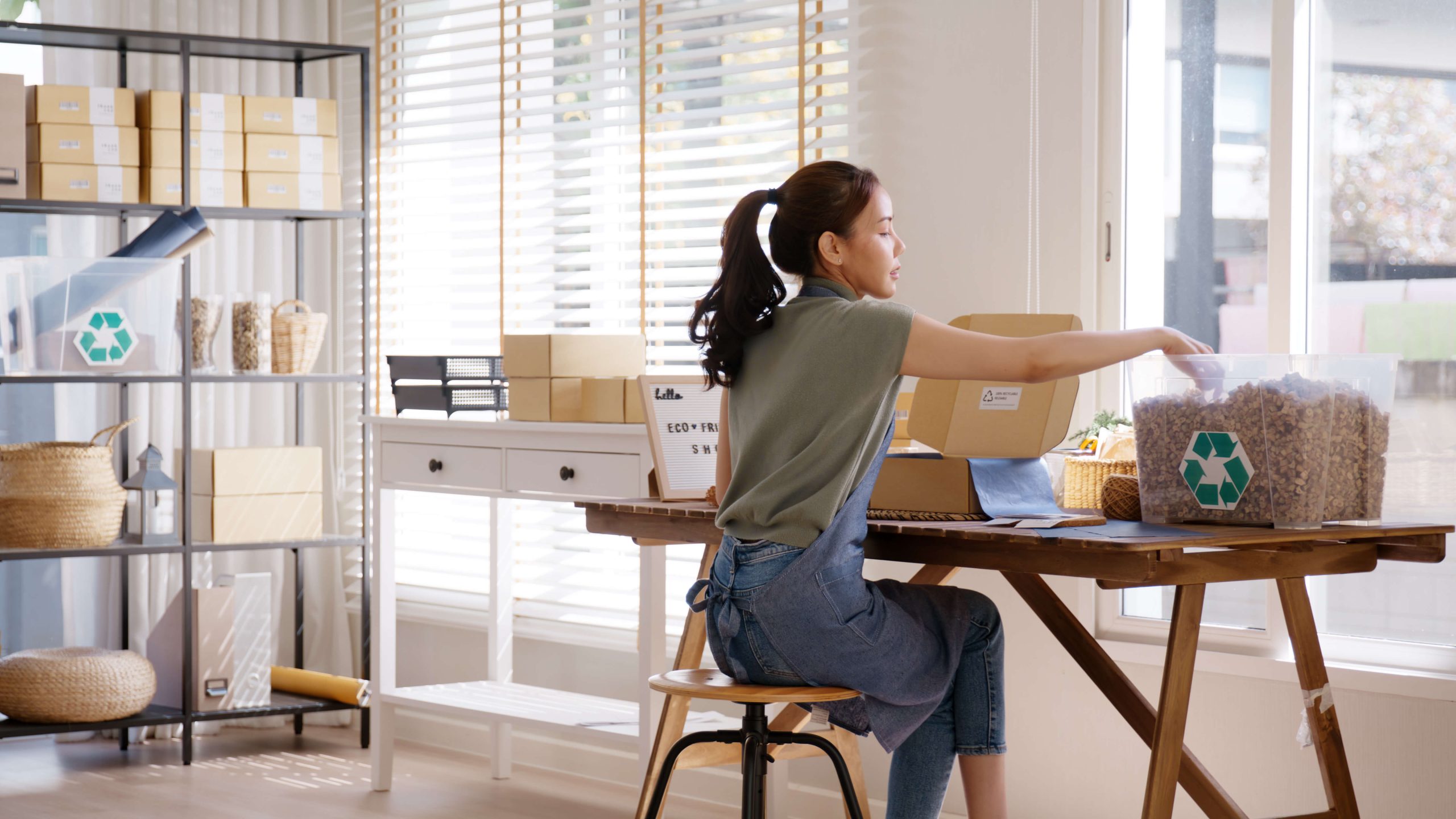We often hear pledges from large corporations about becoming carbon negative in 5, 10 or 15 years. But with more people taking the leap and becoming their own boss, it’s important that the self-employed consider their impact on the environment too. A study, called ‘Who cares? Who does?’ by Kantar, found that sustainability-conscious shoppers represented 22% of all shoppers.
So, focussing on your environmental impact, you could even expand your business by attracting clients who value sustainability and are keen to work with people with the same goals. In fact, according to research conducted by Funding Circle, 66% of UK consumers would spend more on a product if it came from a sustainable business.
Bernard O’Connor, Procurement Manager at Printed.com, shares seven effortless steps that solo traders and freelancers can take to help their business become more sustainable and attract new customers during this year.
1. Choose eco-friendly products
As a freelancer determined to go green, opt for environmentally friendly products and supplies for your business. By supporting green products, you encourage eco-conscious practices throughout the supply chain.
For example, if your business relies on printed materials, such as backing cards, business cards, leaflets, posters and so on, opting for a recycled paper for this will help reduce your negative impact on the environment.
You should also be sure that your paper products are from an FSC certified supplier, like Printed.com. The FSC is an international, non-governmental organisation dedicated to promoting responsible management of the world’s forests. This certification holds businesses accountable to strict standards when it comes to environmental policies and procedures, as well as allowing businesses and consumers to identify, purchase and use wood, paper and other forest products made with materials from well-managed forests and/or recycled sources.
2. Green your workspace
With energy prices soaring once again, revamping your office (or home office, studio etc.) to be more energy-efficient can also cut costs and lower your utility bills.
It’s no myth that appliances consume power even when they are not in use, the term used for these is a ‘vampire device’, also sometimes called a ‘phantom device’. By unplugging unused tech or turning off the plug at the mains you can save up to 10% every month without having to invest in anything. This applies to laptops in sleep mode, monitors on standby, phone chargers left plugged in and more.
A small investment you can make to lower carbon dioxide emissions is changing all bulbs to LED lights. Just one light bulb creates around 20 kg of carbon dioxide emissions per year, which can be reduced by 80% by using LED lights.
In conventionally built houses and buildings, around 9% of heat is lost through walls, 21% through doors and windows, and 70% escapes through the roof. Investing in good insulation may be a significant financial leap, but with soaring energy prices, it is an expense that will bring returns sooner than you think and make your workspace much greener.
If you’re not financially ready to invest in having further insulation put into your home/workspace, save energy by installing a programmable thermostat that lowers the temperature when you’re away. By reducing heating by 1°C, you can reduce your energy consumption by 8%.
You could also switch to Switch to a 100% renewable energy tariff, meaning that the energy you do use is from renewable sources.
3. Reduce, reuse and recycle
If you haven’t already, a new year is the right time to embrace the classic mantra of sustainability: reduce, reuse, recycle. This can be much more than throwing waste into the right bins. Focus on the “reduce” part and think of things you buy for work but can live without. For example, if you use paper towels, just switch them with a stack of microfiber cleaning cloths.
If you buy non-reusable products for your business, be sure that they can be recycled. For example, laminated papers are non-recyclable. A sheet of paper that’s laminated in plastic cannot be separated and recycled using current methods. So, when it comes to choosing ‘Special Finishes’ that require the lamination process, this will automatically create a print that cannot be recycled (even if you have chosen a recycled paper stock to begin with).
If you are a greeting card maker and seller, for example, you could ensure the greeting card and envelope material is recycle friendly and the cellophane bag is compostable (made with renewable corn starch).
To encourage further sustainability, think about including messaging on your product descriptions about how to recycle the elements of it properly, encouraging your consumers to act more responsibly too.
You can take a look at this handy guide which tells you the difference between recyclable and recycled paper to help you make an informed decision.
4. Cut the commute
Working from home and conducting online meetings have proven to be efficient from a business perspective, and as they avoid the use of energy and fossil fuels, they will certainly contribute to reducing the carbon footprint of your business.
Hybrid and remote are more accepted forms of working now, so if you don’t need to commute, don’t!
Ensure you have the means to work and communicate remotely, or at least in a hybrid capacity. Virtual meetings with clients can be conducted over digital communication tools such as Microsoft Teams or Zoom and documents can be shared via the cloud, such as Google Drive or Dropbox.
If commuting is unavoidable, then try an alternative mode of transport to your car. If you live locally, switch the car for the bus or even a bike.
5. Opt for green web hosting
Running a website is already a low carbon footprint business, but you can make it even greener by choosing a green web hosting service.
These providers use renewable energy sources to power their data centres, reducing the environmental impact of hosting websites. This can be a simple yet effective way to align your online presence with sustainability.
6. Offset your carbon footprint
In the UK, the average carbon footprint is 6.5 tonnes per person, and that footprint is even bigger if you’re running a business.
To estimate your business’ carbon footprint you can use a free calculator and follow the energy saving tips provided. You can also invest in some carbon offset initiatives around the globe, such as safe water projects in African countries, or renewable energy projects.
Offsetting your emissions can help counteract the environmental impact of your business activities. It can also help you to become carbon negative which is a fantastic thing to boast about on your channels to existing and potential consumers.
7. Support sustainable, local brands
Choose suppliers and partners that share your commitment to sustainability. Supporting businesses with eco-friendly practices can create a ripple effect throughout your supply chain. Look for certifications like FSC, Fair Trade, B Corp, Carbon Negative when sourcing products or services. This is vital to show you are practicing what you preach.
Also be sure to support more local suppliers, if you are based in the UK, look for UK brands. This will mean no international shipping is involved in getting your products to you. Transportation of goods across long distances contributes to a significant carbon footprint, especially if shipped via air freight. Not shopping locally also means a complex and lengthy supply chain involving multiple countries, this can be harder to monitor and manage in terms of ethical and environmental standards. This complexity can increase the risk of unsustainable practices going unnoticed.
In a world where we are already experiencing the consequences of global warming, every contribution makes a difference. Self-employed individuals can make a difference, just like everybody can in their day-to-day life.
By taking a few simple steps, you can not only reduce your own carbon footprint and save some money on energy bills but also align your business goals with eco-conscious values to set an example for others to follow.







